Today, around 1 million species already face extinction, many within decades, unless urgent action is taken.
In 2022, the historic Kunming-Montreal Global Biodiversity Framework identified five main drivers of ecosystem degradation: changes in land and sea use, direct exploitation of organisms, climate change, the invasion of alien species and pollution.
But while the first four of these drivers receive a lot of attention, the role of pollution is often left out of conversations on protecting and restoring biodiversity.
Ahead of the International Day for Biological Diversity, we sat down with Eloise Touni from the United Nations Environment Programme’s (UNEP) Chemicals and Waste Unit to discuss UNEP’s work on bridging this gap.
Chemical pollution and biodiversity loss are inextricably linked. Why do you think pollution gets less attention than other drivers of degradation?
There are several reasons. Unlike immediate and visible threats such as deforestation or habitat destruction, the effects of chemical pollution are subtle and cumulative. Attributing declines in biodiversity to a single chemical or pollutant is difficult, let alone the combinations that exist in ecosystems. A lot of gaps also exist in scientific research, monitoring, enforcement and regulation – underreporting hides the extent of the problem. For instance, very few studies have investigated how chemicals fit within planetary boundaries, even though the concept has been in circulation since 2009. A 2022 paper recently concluded that we are far beyond the thresholds that humanity can sustain, as new chemicals are emerging on the market faster than we can regulate them. Chemical producers are often powerful so it can be challenging to introduce stricter regulations and tell the story of what chemical pollution is really doing to the planet.
Can you give some examples of how chemicals damage ecosystems?
Sure – it depends on a few different factors: the chemical, the concentration, the duration of exposure, the sensitivity of the given species and habitat.
Pesticides, for example, are directly toxic to organisms, causing death, genetic and physiological deformities and reduced growth in plants and animals. Alongside other chemicals such as industrial pollutants, mercury and heavy metals, these substances can disrupt the balance of ecosystems, with cascading effects on the ways in which the entire structure functions.
Habitat degradation is another issue. Chemical usage is in-part responsible for the 40 per cent decline of insect species across the world, with a third now endangered. More concerning are the impacts on soil, the true effects of which we don’t understand in full. Over 3.2 billion people – 40 per cent of the world’s population – are affected by the degradation of land and soils, posing risks to health and food security.
Persistent Organic Pollutants (POPs), or "forever chemicals” as they’re commonly known, are particularly problematic as they don’t ever break down. They have been found to accumulate in organisms, increasing in concentration as they move up the food chain, everywhere from the Arctic, affecting entire food webs, to the Mediterranean and Atlantic Oceans where orca populations are at risk from PCBs.
How is UNEP’s work with the Global Environment Facility on chemicals protecting biodiversity?
All our projects indirectly benefit biodiversity, reducing the extent of pollution, improving the management of hazardous chemicals and waste and so on; however, with the shift towards more integrated approaches, we now lead several programmes that specifically aim to reduce biodiversity loss.
Financing Agrochemical Reduction and Management (FARM), for instance, is a $37-million programme, operating in India, Philippines, Kenya, Uruguay, Vietnam, Lao PDR and Ecuador to shift global agricultural practices away from highly hazardous pesticides and agricultural plastics towards the adoption of low/non-chemical alternatives.
The Global Monitoring Programme is a long-standing project which systematically monitors POPs in water, soil and breast milk, and has shown that the measures taken by states are working – there are reductions in concentrations of the older banned chemicals. Projects and policy changes do work!
More recently, we have been developing an integrated programme on eliminating hazardous chemicals from fashion and construction supply chains, which will directly contribute to targets set out in the Kunming-Montreal Global Biodiversity Framework.
What is the largest barrier to scaling action on chemical pollution for biodiversity?
To me, it’s the lack of understanding. Chemical pollution is a complex issue. Many people, including policymakers, are not fully aware of the extent of the problem and its implications for ecosystems, and as pollution competes with numerous other environmental issues for attention, this can often act as a barrier. Overcoming this requires not only humanizing the way we communicate but making our work more understandable, so that people working on climate change or biodiversity protection see how chemical pollution is relevant, and more importantly, how we can act in the most effective way. We cannot mobilize meaningful action if other issues continue to take precedence – we need more research to understand the intricate relationships between chemical pollutants and their effects on different ecosystems and species. This demands multidisciplinary expertise, bringing ecologists, ecotoxicologists and environmental chemists together with professionals in forestry, finance and within the industry. This is a challenge in and of itself; however, with the development of the Science Policy Panel on Chemicals, Waste and Pollution Prevention, establishing these connections will become easier.
You have worked on biodiversity at several points in your career. What have you learned during this time?
That we must look at systems in their entirety. Considering problems in isolation often leads to unintended consequences. Banning pesticide use, for example, might be one of the best things we could do for ecosystems but that conflicts with global goals on food security and land use, as well as powerful interests at stake. Developing solutions in isolation is equally problematic. You might find yourself battling a hydra – cutting off one head only to have two more grow in its place.
In reality, progress lies in embracing compromise, finding the balance between different priorities and interests, ideological values and technological pathways. Only by leveraging the strengths of diverse research approaches and perspectives can we develop more comprehensive, nuanced understandings of the relationship between chemical pollution and biodiversity loss. Each perspective contributes an important piece of the puzzle. It may be challenging but it's worthwhile the effort in the end.
Learn more about UNEP’s work with the GIobal Environment Facility on Chemicals and Waste.




